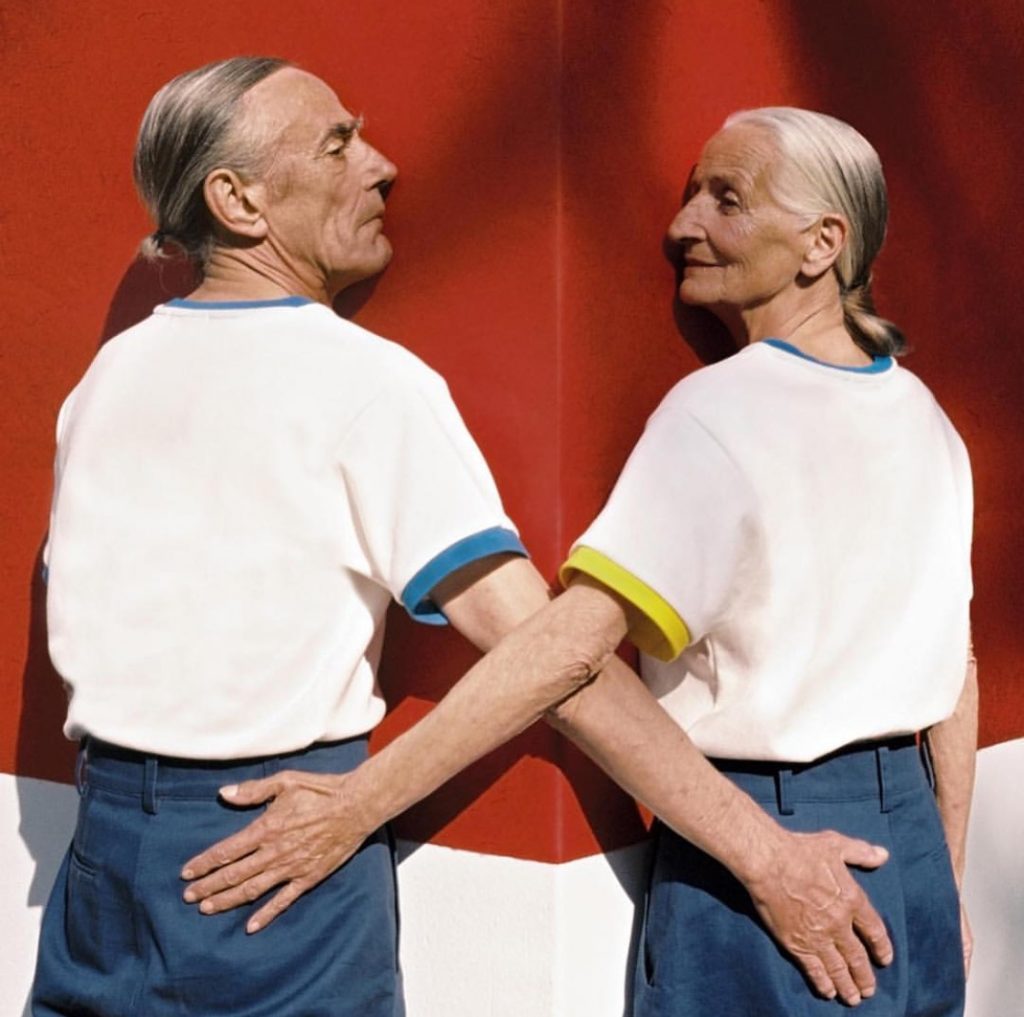The centenarians I’ve investigated seem to have had an instinctive abilityto discern early in life which lessons from their cultural editors they must deeply question and ultimately defy. In fact, although some centenarians I have met had horrendous cultural editors, they were always able to recall someone who, however briefly, stepped into their misery to offer them a gift of love.
What is the lesson here for those seeking how to live to 100 or longer? To realize, independent of the hell we may have gone through, that deep in our memories there are forgotten gifts of random kindness that we neglected to assimilate. Finding those forgotten gifts can be an impetus for resilience.
A patient I was treating for post-traumatic stress disorder could not recall a single act of kindness from her past. After she related her childhood memories, it was not difficult to understand why she was stuck in her infernal present. Her father had sexually abused her from the age of five until she ran away from home at fifteen. When other children were happily anticipating arriving home from school to a cozy environment, my patient was trying to figure out how to avoid her despicable father’s sexual abuse. I could not get a single pleasant memory out of her.
After weeks of practicing a contemplative technique I taught her, she was able to identify an act of kindness in her life. One cold and snowy afternoon, she was walking home from school with her usual apprehension, and an elderly lady who lived a few houses away signaled her to approach. The kind woman asked her to come in from the snow and offered her freshly baked cookies and hot chocolate! I will admit that when my patient finished her story, I defied a stupid rule prohibiting psychologists from touching their patients. I held her in my arms, and we both cried. It was soon after that act of kindness that my patient ran away from home.
What does this compelling story have to do with centenarians and their longevity? It encapsulates the essence of healthy defiance. Before we can righteously defy, we have to feel worthy of defying. And when we defy malevolence, we can find our freedom. Centenarians instinctively know that such random acts of kindness form the foundation of their resilience and their ability to live well past 100. Independent of their emotional storms, they can always recall memories of compassion from their past.
Centenarian Mindfulness: The Role of the Mind in Longevity
Resilience, perseverance, creativity, and flexibility are all attributes I have found in every healthy centenarian I have studied, in cultures spanning five continents. Fortunately, we can learn all of these attributes without relying on our genetic endowment or family history. There are no genes we can isolate to identify the centenarian mind, but we can learn the characteristics that contribute to longevity if we shift our own mindset from one of passing time to one of engaging space. What do I mean by this existential challenge? We need to snap out of our hypnotic concept of time in which things happen to us in sequence, and instead be mindful of how we can happen in our space without assigning a sequence. I will clarify with a few examples from those living to 100 or older.
It’s Monday morning, and your car won’t start. You call a taxi so you can get to work, and it takes forty-five minutes to arrive. When you finally get to work, you realize you have forgotten to mail an important report to a client. That “sequence” of turbulent events begs to be connected using cognitive strings that only exist in your mind: what a horrible start to the week! We impose sequence to our time so we can make sense of the space we travel. But since we tie sequence with cognitive strings to events in our time/space, we are equally capable of untying them with the attributes centenarians share: the creativity to reinterpret negative attributions, the flexibility to consider other options, the perseverance to endure turbulence, and the resilience to engage new mindsets. How does this relate to learning how to live to 100? Stay with me.
Let me further clarify. Although we need to form cognitive strings in order to make sense of our world, when faced with the kinds of circumstances I have just described, we impose a sequence to unrelated events that creates false cause and effect. Your car not starting and your forgetting to mail a report have no cause-and-effect link, but if you tie them together with cognitive strings, you may conclude that everything is going wrong for you that day—that it has been going wrong and will continue to deteriorate. Conversely, crashing your car because your brakes are bad or missing a flight because your connection was delayed have external cause and effect. Although you could conclude from both sets of circumstances that your day is not going well, in one set of events you created false cause and effect—these things are happening because I’m having a bad day—and in the other the cause and effect are demonstrably clear. The ability to distinguish these two ways of thinking is a critical distinction for learning how to live to 100 like a centenarian or supercentenarian.
Toward the end of the article, I will show you how to incorporate the centenarian attributes that can free you from the deleterious effects of creating false cause and effect and unlock the ability to live a long life well past 100. For now, just entertain the notion that sequence lives in your mind, and begin to notice how many of your conclusions about your life events are based on how you have learned to group your experiences together.
The 4 Core Traits of The World’s Longest Lived People
My investigation of centenarians has taught me that these people share four essential beliefs that allow them to live to 100 and well beyond. If we commit to learning and assimilating them, we can increase our own healthy longevity.
1. Growing older is the passing of time; aging is what we do with time based on our cultural beliefs.
2. The present moment is never too late to make commitments.
3. Illnesses are learned; the causes of health are inherited.
4. Forgiveness is a liberating act of self-love.
As I identified the beliefs that centenarians from different cultures share, a very interesting pattern emerged that held the key to figuring out how to live to 100 and beyond. Although there were differences in language, folklore, diet, socioeconomics, politics, and religion, I discovered there is something I now call centenarian mindfulness: finding novelty and wisdom in the challenges one encounters.
I’ll give you a few examples:
+ Being in a concentration camp, learning to enjoy small amounts of deplorable food, realizing how much we overeat, and learning to transform isolation into contemplative solitude.
+ After losing both parents early in life, discovering fatherly and motherly qualities within and using them to guide personal development.
+ Mourning the death of a spouse by celebrating the privilege of having shared a loving journey.
+ Forgiving an act of malevolence, thereby taking back the power given to the perpetrator.
I could go on indefinitely with further examples, but you get the essence of the freshness, resilience and wisdom centenarians possess—and that are they keys for us non-yet-centenarians to learn how to live to 100 and beyond.
I must emphasize, however, that these experiences did not result from naive “positive thinking.” Centenarians experience the depth of their pain, but they also know how to access personal power to learn from their pain. I am reminded, although Nietzsche is one of my favorite existentialist philosophers, that his dictum “what does not kill you makes you stronger” needs modification, especially since it did not work very well for him. Remember, he attempted suicide several times. If you take his statement literally, you might conclude that pain is your only teacher. Most important, what centenarian mindfulness can contribute to Nietzsche’s proposal is this: you must not remain in your hell. Thus, a Nietzschean centenarian would add, “if you find the wisdom to relinquish your pain.” Now let’s return to the four commitments. Toward the end of the chapter, I’ll show you how to gradually incorporate each of them into your life.
Core Belief 1: Growing older is the passing of time; aging is what we do with time based on our cultural beliefs.
This biocognitive iteration means that each repetition adds new information to expand and deepen your felt meaning of a new concept. I’ve also shown the difference between aging and growing older, but what may need demonstration is how centenarians intuitively live the difference, and how they defy cultural editors who attempt to dissuade them from their individualism.
While most people progressively slow down, become less curious, and assume that their abilities will diminish as they age, centenarians do not follow this pattern—and thats a key distinction if you are learning how to live to 100 or longer. Instead, the semantic space of their cultural portal increases in complexity and new learning. When you ask them what their plans are for the future, their answers describe a future you might associate with someone forty years younger. Here are a few actual examples from my field notes of how centenarians conceptualize their existence in time and space, which is one of the primary keys to long life:
MARIO: “I like your vegetable garden. Tell me about it.”
101-YEAR-OLD MAN: “I love the way it’s turning out, but wait till you see it in three or four years.”
MARIO: “I was told you lost your sight last year. How are you adjusting?”
102-YEAR-OLD MAN: “I was sad for a while, but now when I talk to a woman, I have to touch her to know who she is.” (Rascally smile when he tells me.)
MARIO: “I understand you have a new love in your life.”
100-YEAR-OLD WOMAN: “Yes, I like younger men, so I got me an eighty-year-old beau who writes me poems.”
MARIO: “When was the last time you went to a doctor?”
100-YEAR-OLD MAN: “A long time ago. At least thirty years.”
MARIO: “And what do your doctors have to say about that?”
100-YEAR-OLD MAN: “I don’t know—they’re all dead.”
These fascinating responses illustrate centenarian mindfulness of the first commitment. They defy tribal conventions of time, disregard the admonishments of authorities, and inhabit a space that defies the stereotypes of aging—a powerful lesson in how to live to 100 with resilience and life.
Please know that I am not advocating you avoid health care professionals, I am simply reporting what seems to work for some centenarians. Modern medicine has much to offer, as long as you avoid predatory doctors, those who sell fear more than healing.
Core Belief 2: The present moment is never too late to make commitments.
In addition to molding how you age, cultural portals define how you are supposed to plan your future. In most cultures, the young adult portal is very different from the old age portal. For example, you may be praised if you decide to go to college at thirty, but if you make that same decision at eighty, you will most likely encounter killjoy comments such as “At your age?” and “Take it easy and enjoy your retirement.” Your well-meaning friends are not aware they are living in the semantic space of a portal they bought from their culture rather than exploring the opportunities life has to offer them at any age. The following responses to my questions are examples of the second mindfulnesscommitment: it’s never too late to engage your passion—a key piece of wisdom for life in general and peek into the mindset of someone who knows how to live to 100 and beyond.
MARIO: “Do you have any plans for this year?”
103-YEAR-OLD MAN: “Yes—I am taking tango lessons. I always wanted to learn in Buenos Aires, but with the money I’m saving by taking lessons here in town instead, I’ll be able to do other fun things.”
MARIO: “Your friend tells me you’re getting married again.”
105-YEAR-OLD MAN: “Yeah, my girlfriend wants to start a family.” (Raucous laughter after he says this.)
MARIO: “And how old is your girlfriend?”
105-YEAR-OLD MAN: “Well, she lies about her age, but I bet she’s pushing ninety.”
MARIO: “You sprained your ankle jogging. Are you going to stop running?”
100-YEAR-OLD MAN: “Yeah, sprains are hard to heal, but I joined a swimming team, and I am going to compete next year in my age group.”
MARIO: “And how many other swimmers are in your age group?”
100-YEAR-OLD MAN: “These two other old guys who think they’re great.” (The two “old guys” were ninety and ninety-one.)
These amusing excerpts may seem made up, but I assure you, I had the best time hearing all the ways these exceptional people break patterns set by those who think old. For most centenarians, the present moment is never too late to make commitments. And the centenarian jogger illustrates another interesting characteristic I noticed in many male centenarians; they refer to other elderly men as “old guys.” They also frequently tell you they don’t like to be around “old people.” Why? The most frequent answer I have heard is, “Old people are always complaining about their aches and pains.” I was amused to learn most of these “old people” are much younger than the centenarians who avoid them. Simple, but a poignant reminder of the power of the mind for those who know how to live to 100 and far beyond.
And here is another centenarian insight: many view themselves as significantly younger than their age.
Your lesson here is clear: don’t ever let anyone kill your dreams because of the quantity of life-space you have traveled. Let the fearful call it their time, and you can call it your space.
Core Belief 3: Illnesses are learned; the causes of health are inherited.
In my book I explain the science that underlies how, based on our cultural beliefs and life choices, we teach our nervous, immune, and endocrine systems to break down, as well as how our genes relentlessly express our inherited causes of health rather than sentencing us to inevitable illness. We can look at what centenarians have to say about their genetics—better yet, how they live their genetics and what we can learn that will help us to understand how to live to 100 and older.
MARIO: “How old were your parents when they died?”
100-YEAR-OLD MAN: “My dad was seventy, and my mother was eighty-one.”
MARIO: “Were either of your parents centenarians?”
101-YEAR-OLD WOMAN: “No, my mother lived to be seventy-nine, and my father was around seventy-five when he passed.”
MARIO: “Do you have any relatives who were centenarians?”
103-YEAR-OLD MAN: “What the hell is a centurion?”
MARIO: “No, I said centenarians—people one hundred years or older.”
103-YEAR-OLD MAN: “Oh, well, I had a great-uncle who lived to be ninety-nine.”
MARIO: “What illnesses were most common in your family?”
106-YEAR-OLD WOMAN: “I think cancer and diabetes.”
MARIO: “Do you have any illnesses?”
106-YEAR-OLD WOMAN: “I got a little arthritis and can’t hear too good.”
MARIO: “Did you know they call people your age supercentenarians?”
110-YEAR-OLD WOMAN:“Really? I never thought I’d live this long.”
MARIO: “Have you noticed any change in your health the last couple of years?”
110-YEAR-OLD WOMAN: “Not much. If I keep going like this, who knows how long I’ll be around.”
MARIO: “Tell me about your diet. What types of food do you usually eat?”
100-YEAR-OLD WOMAN: “I don’t diet. I eat whatever I want. Some meat, some fried chicken, some fruit.”
These answers reflect what I argue about, long life, health and longevity. It is not primarily genetic endowment. Rather than inheriting illnesses, we are genetically predisposed to maintaining good health! But notice how these centenarians are not trying to live a long time. It is how they think and live that accounts for their longevity. I also found that their longevity is not so much about what they eat but how moderate they are with their eating. I have more to say about dining rituals in my book, The MindBody Code: How to Change the Beliefs that Limit Your Health, Longevity, and Success.
Core Belief 4: Forgiveness is a liberating act of self-love.
This particular commitment to centenarian mindfulness is one of the most important, especially if you are seeking to decode how to live to 100 and beyond. If you are reluctant to forgive, you relinquish your power to your perpetrator. Centenarians I studied consistently showed me they do not hold grudges.
MARIO: “You were in a concentration camp during World War II. How did you deal with it after you were freed?”
101-YEAR-OLD MAN: “It was the worst experience in my life, but you know what I remember most? I was worried my mother wouldn’t understand that they didn’t let me write her.” (He laughs about his concern.)
MARIO: “So what did you do when you were freed?”
101-YEAR-OLD MAN: “The first thing I did was to explain to my mother that the camp guards didn’t allow mail. Boy, did she get upset with the guards.” (More laughter.)
MARIO: “How did you feel about the guards? Did you resent them?”
101-YEAR-OLD MAN: “Hell, yeah! They were sons of bitches. But you know, I felt sorry for one of them because he was just a kid, like me. He used to bring me some bread when he could sneak it in. You know, I got to like that kid. He was risking his life trying to help me!”
MARIO: “Did you forgive them for all they did to you?”
101-YEAR-OLD MAN: “You think I was going to waste my time resenting those bastards? I kept thinking how lucky I was to find a friend who was supposed to be my enemy.”
This more than suffices to highlight the process of letting go: forgiveness as a liberating act of self-love—and a key to living to 100 and then some. By allowing gratitude to reign over bitterness, this centenarian was able to re-contextualize his resentment. By shedding the weight of his resentment, he reclaimed the humanity that had been stolen from him.






